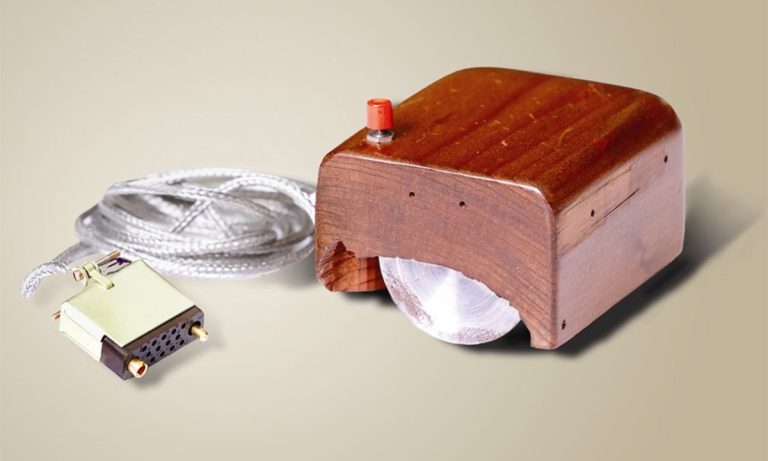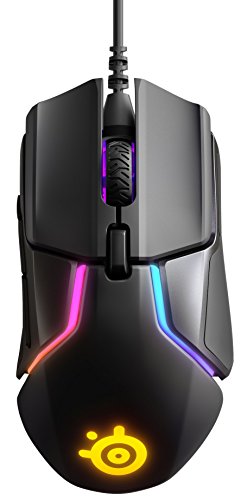In this article, we revisit the glorious and fascinating history and evolution of gaming mouse. You’ll learn about the first gaming mouse ever made, the first ever competitive PC gaming mouse, the use of laser sensors in gaming mice for the first time, and much more.
It’s a scroll through time and a humble attempt to honor the advancements in gaming mouse technology over the last 60 years!
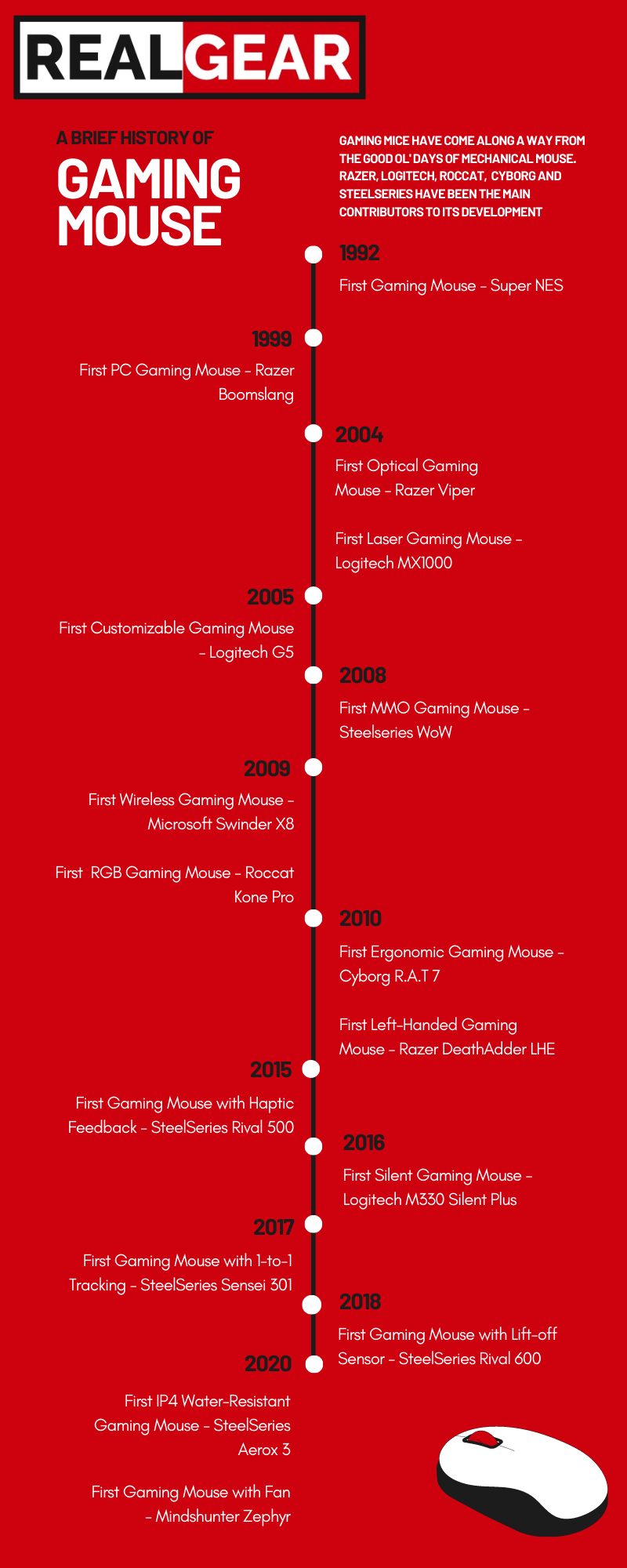
What was the World’s First Gaming Mouse?
The Super NES Mouse was the first gaming mouse ever made. It was developed exclusively for the Super Nintendo Entertainment System (SNES) and came bundled with Super Mario Paint in 1992.
The Super NES Mouse featured a rectangular body shape, mimicking the design aesthetic of Apple’s Macintosh Mouse, albeit with left and right clicks. Two years later, in 1994, competing console brand Sega introduced their own gaming mouse, called Sega Shuttle, for their Saturn console.
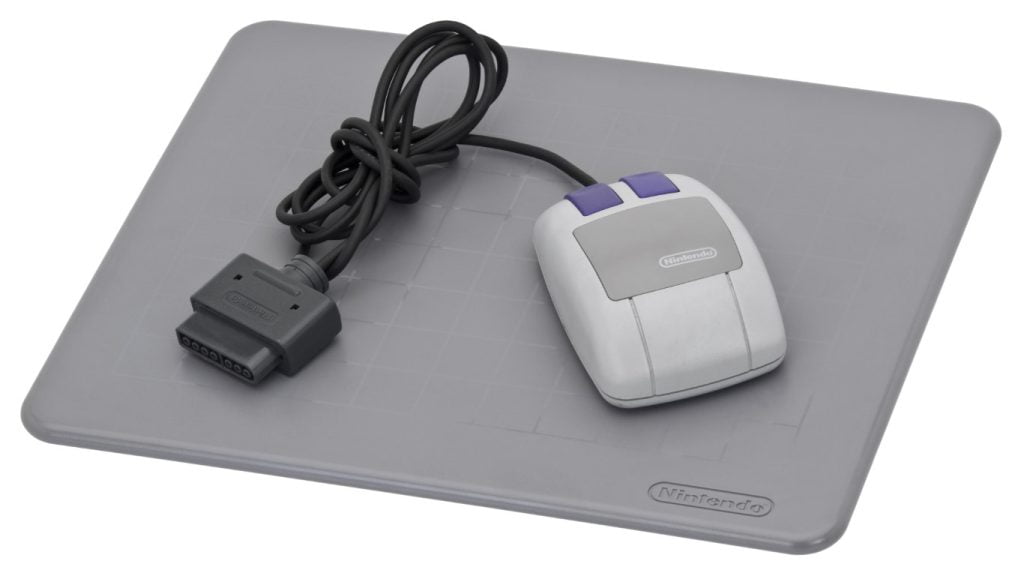
While the Super NES and Sega Shuttle mice have a special place in history as the first-ever gaming mice, they were limited to their respective consoles, the SNES and Sega Saturn. People who had a PC would still play games on their keyboards. Debbie downer!
Razer, a California-based subsidiary of kärna LLC, saw this gap (and need) in the market and decided to release the very first dedicated PC gaming mouse.
Razer Boomslang: The First-Ever Competitive PC Gaming Mouse
Razer Boomslang was the first-ever PC gaming mouse launched in 1999. Robert Krakoff, the co-founder and president of Razer, was the brain behind it. You can find him below promoting Boomslang at an event. (P.S: RIP the Razerguy–you’ll forever be missed!)
The Razer Boomslang came in a sexy tin container and featured two models: a 1000 DPI and a 2000 DPI. These resolutions were unheard of at that time. The mouse used a cutting-edge optomechanical ball mechanism, employing a combination of LEDs and traditional mechanical movement.
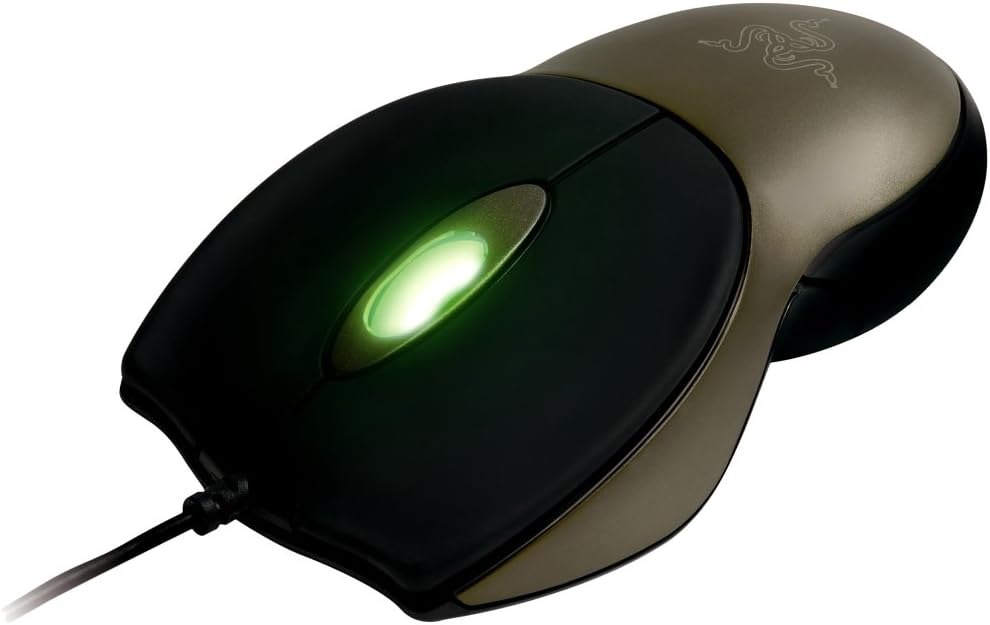
The Razer Boomslang quickly gained a cult following among Razer enthusiasts. Nine years later, in 2008, Razer responded to popular demand by releasing a Collector’s Edition of the Razer Boomslang. The new version retained the beloved design of the original but featured Razer’s new 3G infrared sensor.
Boomslang proved to be “the” vanguard of the Razer gaming mouse history!
[2004] Razer Viper Optical Mouse: Busting the Balls!
In 2004, Razer made another splash with the launch of the Razer Viper Optical Mouse, the very first gamer-centric mouse to feature a true optical sensor.
When it comes to gaming, optical sensor mice provide numerous advantages over mechanical mice. Unlike the latter, optical mice don’t get clogged up by dust and grime. As such, their performance doesn’t degrade with usage. Additionally, mechanical mice suffer from inertia caused by the moving ball, while optical mice have none of these flaws.
In terms of specs, the Razer Viper Optical Mouse featured a fast 1,000 DPI optical engine with the option to adjust sensitivity on the fly. It also had a scroll wheel, a comfortable ambidextrous shape, a solid chassis, and ultra-slick Teflon feet for easy and smooth mouse movement.
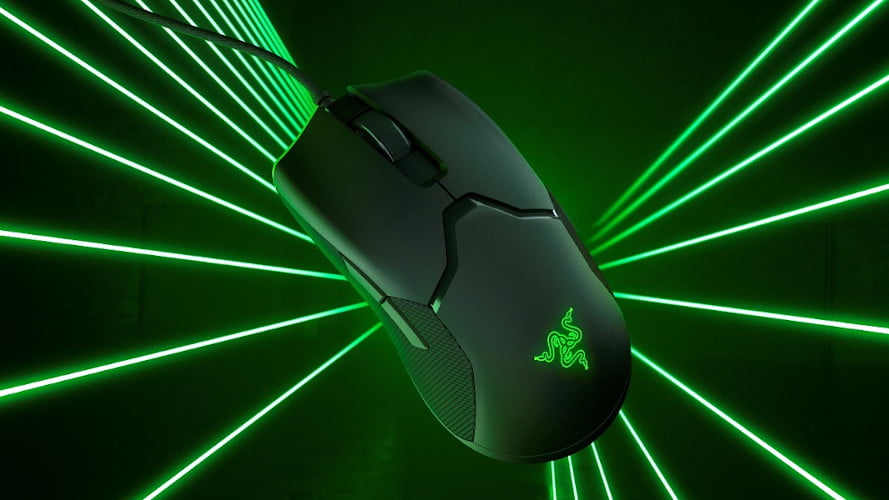
The Razer Viper had made optical technology accessible to PC gamers!
However, Logitech was lurking in the shadows, ready to take the attention away from Razer. They had the perfect response to the Razer Viper Optical mouse by introducing the world’s first laser mouse.
What was the first laser gaming mouse?
[2004] Logitech MX1000: Going Pew-Pew with Laser Technology
The year 2004 marked a significant milestone in Logitech gaming mouse history. The company launched MX1000, the first-ever gaming mouse to feature a laser sensor.
The laser sensor offered unparalleled precision and tracking capabilities, surpassing those of mechanical and optomechanical mice. In addition to its advanced laser sensor, the MX1000 featured six buttons, a scroll wheel – something you couldn’t take for granted in the early 2000s – and an 800 DPI resolution.
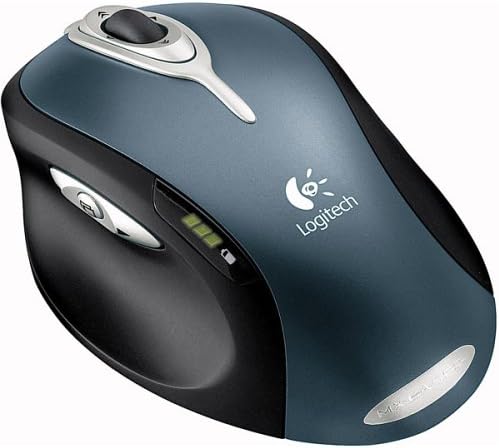
While the 800 DPI may have been comparable to some mechanical mice, the MX1000 made up for it by having the ability to function on any surface, including transparent glass – and even your jeans.
Logitech later replaced the MX1000 with an upgraded model called the MX1100. It boasted an improved laser sensor capable of delivering twice the resolution at 1,600 DPI.
The race to make the best and most advanced gaming mice was on!
[2005] Logitech G5: The First Customizable Gaming Mouse
As a company on the bleeding edge of technology, Logitech unveiled the Logitech G5 gaming mouse just a year later, in 2005. Affectionately called the grandfather of the G502 by Logitech enthusiasts, the Logitech G5 significantly impacted the gaming industry with its focus on user customizability and personalization.
In an industry-first, the Logitech G5 introduced user-adjustable weights, DPI, mouse sensitivity, and six programmable buttons. All of these customization options were made possible via Logitech SetPoint software.
The mouse came equipped with Logitech’s new and improved S6006 laser sensor with 2,000 CPI, a polling rate of 1000 Hz at 1 ms latency, and a lightweight design of just 106 grams.
The G5 emphasized the importance of customization in gaming peripherals, catalyzing the industry’s efforts to develop mice specifically tailored for gamers.
However, despite all its perks, the Logitech G5 fell short as an MMO gaming mouse, a rising game genre at the time due to the popularity of WoW, released in late 2004.
Fortunately, it wasn’t long before dedicated MMO gaming mice entered the scene to fill the niche.
- Logitech G5 USB Laser Gaming Mouse General Features:
- Full speed USB interface - up to 6.5-foot cable length (approximate) 2000 dpi Laser Engine
- Right-handed comfort grip Certified for Windows Vista Polytetrafluoroethylene feet Controls
- Tilt wheel: Push wheel to either side to scroll horizontally + in game dpi increase
When did the first MMO mouse come out? The answer is 3 years later!
[2008] SteelSeries WoW: The First Gaming Mouse for MMO Players
In 2008, SteelSeries, a relatively new player in the gaming industry back then, made waves by introducing the world’s first-ever MMO gaming mouse. Known as the SteelSeries WoW or ‘World of Warcraft’ gaming mouse, it boasted an impressive 11 buttons with customizable key bindings, a groundbreaking feature at the time.
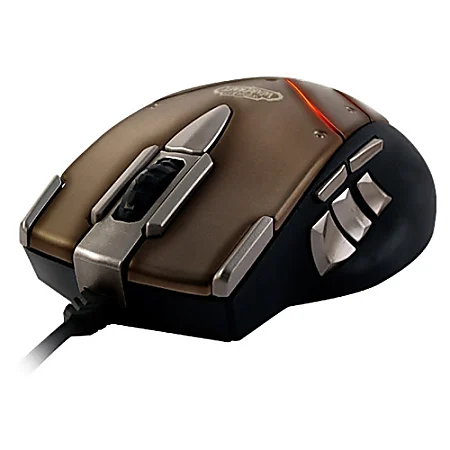
In addition to the standard left/right click and scroll wheel, the SteelSeries WoW featured a thumb button grid and four additional buttons on the top. Powered by SteelSeries in-house laser sensor, the WoW mouse could achieve a maximum DPI of up to 3,200.
Overall, the SteelSeries WoW gaming mouse exemplified the gaming industry’s ongoing commitment to catering to specific gaming communities. Gamers found it a boon to use SteelSeries WoW in real-time strategy games and Multiplayer Online Battle Arenas (MOBAs) such as World of Warcraft and League of Legends.
[2009] Microsoft Sidewinder X8: Cutting the Cord and Going Wireless!
Noticing the lack of gamer-centric wireless mice, Microsoft swooped right in with the wireless Sidewinder X8 in 2009. The X8 specs were comparable to some of the wired mice of its time, which was quite a feat. For instance, it boasted an impressive 4,000 DPI, the first wireless mouse to achieve such a high DPI.
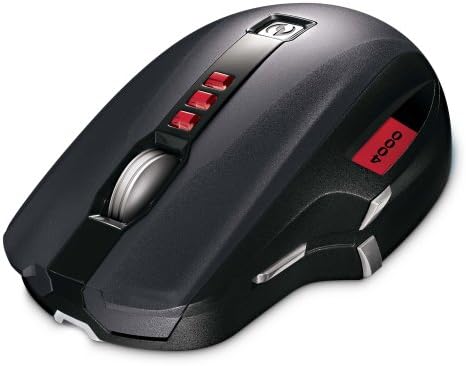
Furthermore, the Sidewinder X8 featured a polling rate of 500 Hz. For perspective, wireless mice were typically limited to just 125 Hz at that time. This was made possible by utilizing 2.4G wireless technology.
Aside from performance, 2.4G wireless technology also proved to be remarkably power-efficient. Microsoft claimed a battery life of up to an impressive 30 hours. Moreover, the Sidewinder X8 also offered the option to use the mouse with a wire while simultaneously charging it.
Overall, the Sidewinder X8 represented a significant milestone in gaming mouse history, and no discussion of the topic would be complete without it.
However, the Sidewinder X8 lacked one important feature that will go on to define the gaming industry: RGB lights!
What was the First RGB Gaming Mouse?
The Roccat Kone Pro was the world’s first gaming mouse to embrace the RGB trend. It was released in 2009 and featured semi-transparent left and right-click buttons with honeycomb textures and user-adjustable RGB lighting underneath. Although it may appear modest compared to modern RGB mice, every trend has to start somewhere!
However, the Roccat Kone Pro wasn’t solely focused on RGB aesthetics. It also boasted an impressive 3,200 DPI resolution and a polling rate of 500 Hz with a latency of 2 ms. All of these features could be customized using the Roccat Swarm, a curious name for surprisingly functional software.
Overall, the Roccat Kone Pro was a pioneer in addressing the growing popularity of RGB gaming setups. Its introduction inspired other mouse manufacturers to join the RGB bandwagon.
- AN ICONIC SHAPE, PERFECTED - Refined to perfection over hours of anthropometric research, the Kone Pro’s ergonomic shape and light weight of 66g offers superior comfort for any hand size or grip style
- ROCCAT BIONIC SHELL - The solid, lightweight honeycomb shell with a translucent fade on the main clicks, provides the perfect showcase for vivid AIMO 16.8 million color RGB lighting
- TITAN SWITCH OPTICAL - Faster than any mechanical switch, the Titan Switch Optical provides a long-lasting 100 million click life cycle, and speed-of-light actuation for unprecedented speed and precision
[2010] Cyborg R.A.T 7: Ergonomics Personified!
In 2010, Cyborg, a subsidiary of MadCatz, released the highly customizable, ergonomic R.A.T 7 gaming mouse. Unlike most other gaming mice of the time, the R.A.T 7 offered extensive customization options, including adjustable weights and a pair of swappable palm and thumb rests that could be moved and locked into place.
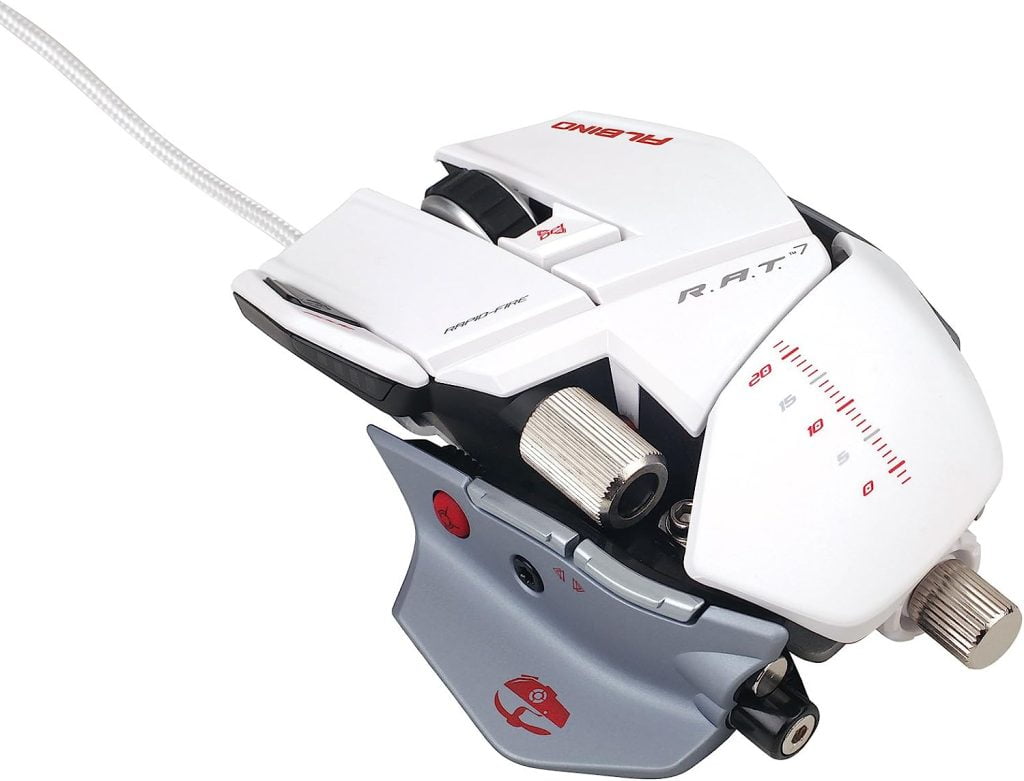
In terms of specs, the R.A.T 7 featured a laser sensor with a peak DPI of 5,600, 8 programmable buttons, a DPI selector, and dual scroll wheels. The mouse had a base weight of 158 grams, which could be increased to 184 grams using the included 5 metal weights, each weighing 6 grams.
The R.A.T 7 became the world’s first-ever gaming mouse with a pinky rest and adjustable palm rest. It was also the ideal choice for people with large hands. But despite all its features, the R.A.T 7 still wasn’t suitable for left-handed users.
[2010] Razer DeathAdder Left Hand: The Southpaw!
A recurring theme of gaming mice is that they primarily cater to righties with no love for lefties. While ambidextrous mice are widely available, they often make compromises to achieve their egg-shaped symmetrical style.
However, this is where Razer stands out.
Recognizing the demand from left-handed gamers who have long sought a gaming mouse specifically designed for them, Razer introduced the popular DeathAdder in a left-hand configuration, the first mouse to do so in Razer gaming mouse history. The mouse was launched in 2010.
Essentially, the Razer DeathAdder LHE was a mirrored version of the vanilla DeathAdder. It shared similar specifications, including the Precision 3.5G sensor with a DPI of 3,500 and a polling rate of 1,000 Hz.
In short, Razer made no compromises with the DeathAdder LHE and ‘left’ a lasting impression on the gaming mouse industry.
- The first gaming grade mouse dedicated solely to left-handed professional gamers was conceived because when it comes to it, you want to know you are perfectly equipped with precision and comfort
- With 3,500DPI, you can arm yourself with four times more precision than a standard 800DPI mouse, giving you the edge over the entire competition
- The Razer DeathAdder Essential is eqipped with a precision 3.5G infrared sensor, ensuring one of the most reliable and accurate trackers in gaming
[2015] SteelSeries Rival 500: The World’s First Gaming Mouse with Haptic Feedback
If there is one feature that gaming mice have traditionally lacked compared to game consoles, it’s the haptic feedback. However, SteelSeries finally addressed this in 2015 with their Rival 500 gaming mouse, giving PC gamers a taste of haptic feedback goodness.
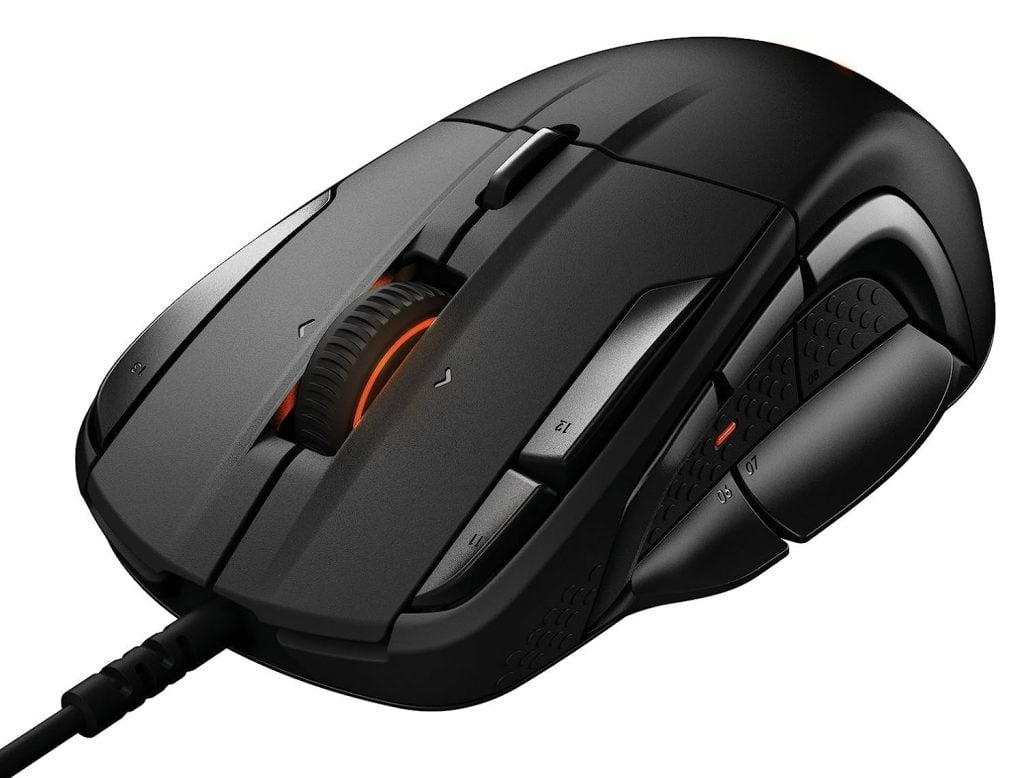
The haptic feedback feature enhances immersion by allowing the mouse to vibrate in response to in-game events like getting shot. This feedback also reduces the need to constantly look at the screen.
In terms of specs, the SteelSeries Rival 500 boasted a PixArt PMW3360 optical sensor, rated for up to 16,000 DPI, with a polling rate of 1,000 Hz and a latency of 1 ms. Despite including a haptic motor, the SteelSeries Rival 500 remained relatively lightweight at just 123 grams.
Overall, the SteelSeries Rival 500 represented an important milestone in the gaming mouse industry by bringing a new dimension to gaming.
[2016] Logitech G403 LightSpeed – Lightning Fast
While Microsoft pioneered wireless gaming mice with their Sidewinder X8, it had one notable flaw: latency. Logitech addressed this issue in 2016 with the introduction of the Logitech G403 Prodigy LightSpeed. Serving as the precursor to Logitech’s iconic G Pro, it showcased Logitech’s now-famous LightSpeed wireless technology.
The G403 Prodigy LightSpeed was equipped with the PixArt PMW3366 optical sensor, offering a peak DPI of 12,000 and a polling rate of 1,000 Hz with a latency of 1 ms. Despite the built-in radio, the G403 Prodigy weighed a mere 87 grams.
[2016] Logitech M330 Silent Plus: Crick-Crick-Crickets!
Some gamers often complain about the noise produced by mouse clicks. After all, not everyone’s a fan of all that clackity-clack-clack. Logitech introduced the M330 Silent Plus in 2016 to address this issue, marking the world’s first-ever silent mouse.
Logitech claimed the M330’s clicks were up to 90% quieter than those of a typical gaming mouse with mechanical switches. This gave gamers a stealthy, distraction-free gaming experience.
In terms of specs, the Logitech M330 Silent Plus featured a 1000 DPI optical sensor with a 1,000 Hz polling rate at 1 ms latency. It offered wireless connectivity with an internal rechargeable battery that could last up to 24 months. Despite the large internal battery, the M330 weighed just 93 grams.
- Quieter Click: Logitech’s SilentTouch Technology reduces over 90 percent (1) of clicking sounds while ensuring top performance, meaning you can feel every single click but hear virtually nothing
- Crafted for Comfort: With contoured grips made of soft rubber, the noiseless M330 SILENT PLUS mouse is built to give great comfort to right-handed users
- Long Life: This cordless mouse has a 24-month battery life (2), and automatically switches to sleep mode when not in use, allowing you to focus on your work without the hassle of changing batteries
[2017] SteelSeries Sensei 310: The First Gaming Mouse with True 1-to-1 Tracking Sensor
When it first launched, the SteelSeries Sensei 310 seemed like any other gaming mouse on paper. It was powered by the TrueMove 3 optical sensor with 12,000 DPI, 350 IPS tracking speed, and a 1,000 Hz polling rate with 1ms latency.
However, the SteelSeries Senei 310 had more to it under the hood. It had the distinctive title of being the first gaming mouse to feature true 1-to-1 tracking, making it an ideal choice for professional gamers.
This innovative 1-to-1 tracking ensured a jitter and distortion-free source signal from your mouse to the computer, resulting in a smooth, predictable mouse movement. Moreover, the Sensei 310 achieved 1-to-1 tracking across a broad range, from 100 to 3,500 CPI, which in itself was an achievement.
The SteelSeries Sensei 310 set the bar even higher for future gaming mice.
- Custom TrueMove3 12,000 CPI, 350 IPS optical 1-to-1 tracking esports sensor
- Legendary SteelSeries Sensei ambidextrous design for claw and palm grip styles
- Two-zone, multi-color Prism RGB illumination for customizable lighting. Save all your performance and lighting settings directly to the Sensei 310
[2018] SteelSeries Rival 600: The Gaming Mouse with a Lift-off System
SteelSeries continued to push the boundaries of gaming mice by introducing the Rival 600 in 2018, which featured a groundbreaking advanced lift-off sensor system.
The lift-off sensor technology would actively monitor when a user had lifted the gaming mouse and automatically calibrate itself to different mouse surfaces, ensuring accurate and consistent tracking.
In terms of specifications, the Rival 600 came equipped with the SteelSeries in-house TrueMove 3+ optical sensor, boasting a DPI of 12,000, and a polling rate of 1,000 Hz with 1 ms latency. It weighed just 96 grams.
- Exclusive true move 3 12,000 cpi, 350 ips optical 1 to 1 tracking esports sensor
- The world's lowest and most accurate lift off distance; Cable length 2 meter; 6.5 foot
- 256 center of gravity weight tuning configurations; Lift off distance: Customizable, 0.5 millimeter, 2 millimeter
- Split trigger 60 million click mechanical switches
- Revolutionary silicone side grips for increased grip and durability
- Premium magnetic wrist rest – Provides full palm support and comfort
[2020] SteelSeries Aerox 3: The Amphibian Gaming Mouse!
In 2020, SteelSeries made a big splash in the gaming mouse industry, releasing the Aerox 3. It was the world’s first mouse to feature an IP54 dust and water-resistant rating. Additionally, it was one of the lightest gaming mice of its time, weighing just 66 grams.
The SteelSeries Aerox 3 came equipped with the SteelSeries in-house TrueMove Air sensor, boasting an impressive 18,000 CPI and a polling rate of 1,000 Hz at 1ms. It also included an internal rechargeable battery that could last up to 200 hours in high-efficiency mode or up to 80 hours with RGB lights enabled.
The water-resistance feature on a gaming mouse was a valuable addition, protecting against spillages and energy drink related ‘accidents.’ We sure hope to see more wet-weather-warriors like this from other manufacturers in the near future.
- 68g Ultra Lightweight - When quick movements and large swipes matter, Aerox 3’s super light design allows for faster and more accurate reaction times in game.
- TrueMove Air Sensor - A custom true 1-to-1 tracking sensor co-developed with PixArt specially for wireless performance. This 18,000 CPI, 400 IPS, 40G optical sensor delivers the speed and accuracy needed to improve your gameplay.
- Quantum 2.0 Wireless - All-new Quantum 2.0 Wireless technology transmits wireless data at unreal speeds in a more stable, reliable, and power efficient way than ever before.
[2020] Mindshunter’s Zephyr: The First Gaming Mouse with Fan
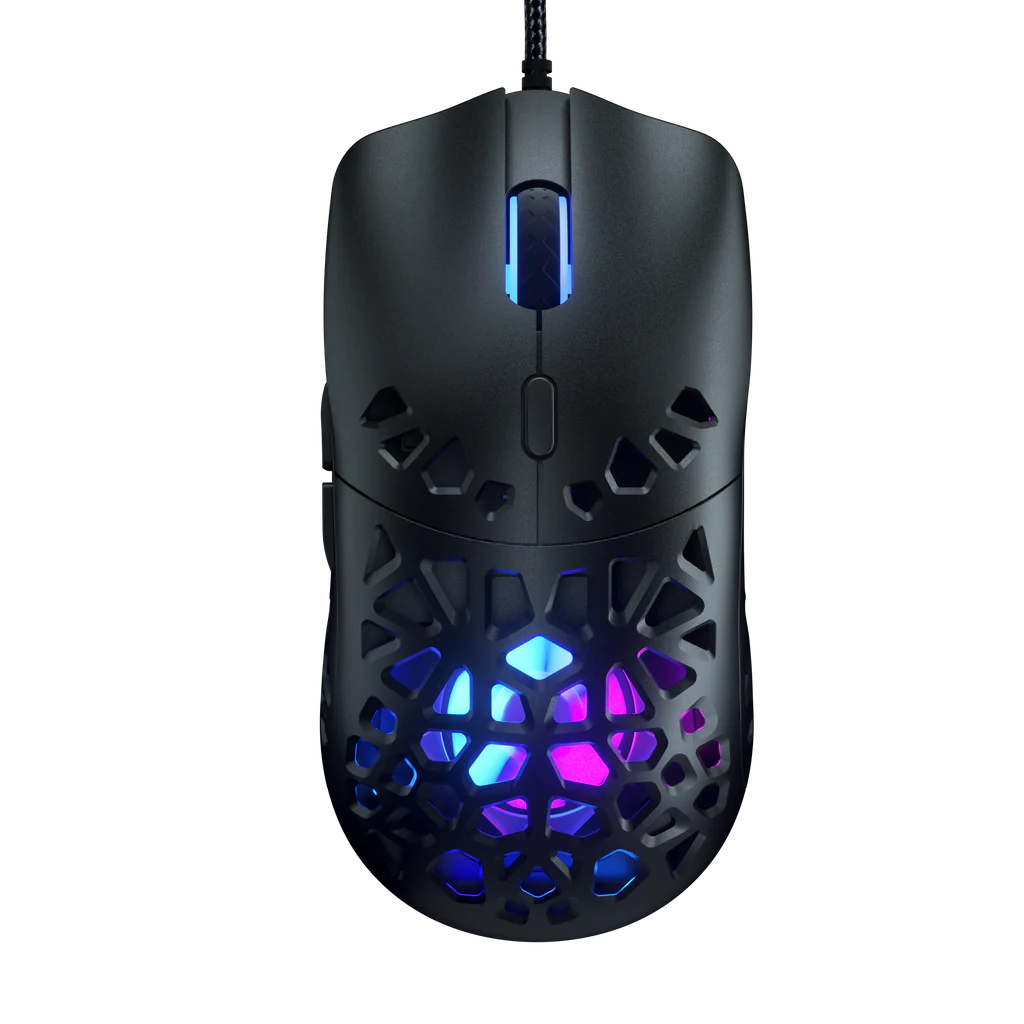
In 2020, Mindshunter’s Zephyr raised the bar for gaming mouse innovation by incorporating an angled fan inside the chassis. This unique feature was designed to cool the user’s palm, making it an ideal gaming mouse for sweaty hands.
In terms of specifications, the Mindhunter Zephyr utilized a PixArt 3389 optical sensor with a maximum DPI of 16,000 and a polling rate of 1,000 Hz. As for the fan, it offered three different speed settings to accommodate the user’s preference: 4,000, 7,000, and 10,000 RPMs.
The fan would become sort of a ‘decibel demon’ at over 7,000 RPMs with a ‘whirly,’ high pitched whistle that some gamers found annoying. However, it was an innovative attempt that deserves a special place in the history of gaming mice.
Gaming Mouse Evolution: A Testament to Progress and Possibility
The history and evolution of gaming mice have made significant progress since the invention of the X-Y Position Indicator. Numerous brands have contributed to this advancement.
Logitech introduced laser sensors, customization options, and wireless technology with models such as the MX1000, G5, and G403 LightSpeed, bringing these technologies to the forefront.
SteelSeries made an impact with mice like the WoW Gaming Mouse, Rival 500, Sensi 310, and Aerox 3, which introduced features like MMO functionality, 1-to-1 tracking, haptic feedback, and water resistance.
Other notable innovations include the Roccat Kone Pro with RGB lighting, Razer’s DeathAdder LHE designed for left-handed gamers, the SteelSeries Rival 600 offering advanced tracking and lift-off sensor systems, and the Mind Hunter Zephyr with a built-in fan.
We hope you enjoyed this scroll through the time. As we bid adieu to the history of gaming mice, we look forward to the endless possibilities yet to be explored for our nimble little gaming friends. To the clicks!

